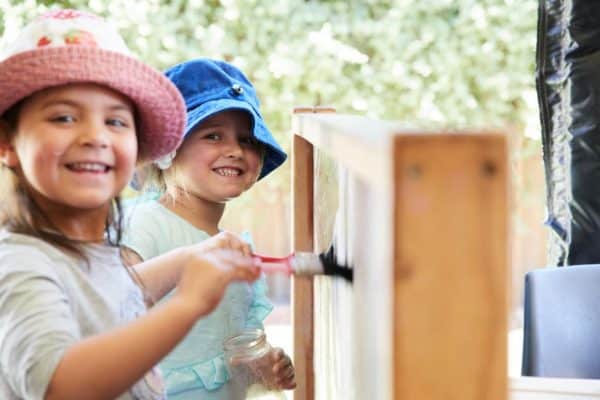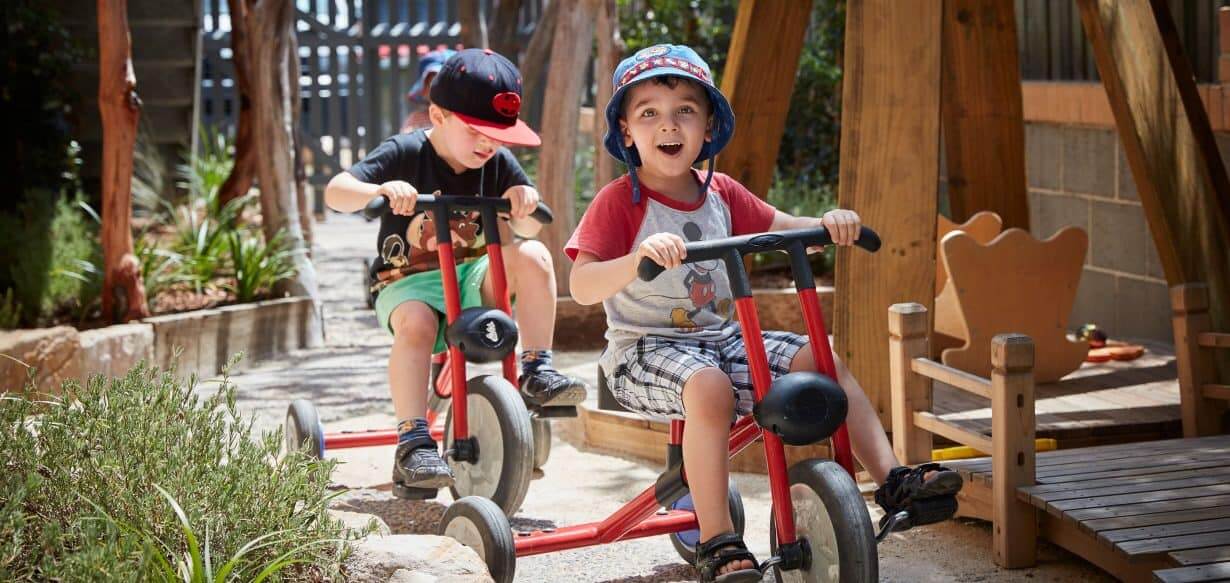https://www.guardian.edu.au/blog/playtime-with-children/children-need-tricky-experiences/At Guardian, play is always more than just play.
With a Curriculum that focuses on developing 21st Century skills through intentional, learning-based play, our Educators strive to create lifelong learners through everyday experiences.
In April 2019, the World Health Organisation (WHO) released new guidelines that further support the significance of play – and sleep.
According to WHO, “Children under five must spend less time sitting watching screens, or restrained in prams and seats, get better quality sleep and have more time for active play if they are to grow up healthy.”
Developed by a panel of WHO experts, these guidelines were created after assessing children under five on their sleep schedules, time spent watching screens, and sitting restrained in chairs or prams. The panel also evaluated evidence on the benefits of increased activity levels.
The research discovered that over 23% of adults and 80% of adolescents are not sufficiently physically active.
For those looking to swap out screen time, WHO recommends an increase in “quality sedentary time spent in interactive non-screen-based activities with a caregiver, such as reading, storytelling, singing and puzzles”.
When visiting Guardian in 2018, Dr Elanna Yalow, Chief Academic Officer of Early Learning Programs of KinderCare, shared some valuable insights into the effects of screen time on young children.
“Overexposure [to screens] not only is not supporting healthy brain development but in addition, there are all kinds of health consequences. When children are sitting in front of computer screens, even if they’re interactive, they are stationary, and that’s a significant contributor to health problems as well as not supporting healthy brain development.”
According to WHO’s Commission on Ending Childhood Obesity, “Physical activity behaviours across the life-course can be heavily influenced by childhood experience. Creating safe, physical activity-friendly communities, which enable, and encourage the use of active transport (walking, cycling etc.) and participation in an active lifestyle and physical activities, will benefit all communities.”

So, what does this all mean?
Simply put, we as Educators and families need to continue to focus on valuable, play-based experiences for children, restrain them minimally each day, and ensure they get optimal sleep. WHO has broken down their recommendations into age-appropriate segments, so we can create custom routines for children of all ages:
WHO recommendations at a glance:
Infants (under one-year old) should:
- Be physically active several times a day in a variety of ways, particularly through interactive floor-based play; more is better. For those not yet mobile, this includes at least 30 minutes in prone position (tummy time) spread throughout the day while awake.
- Not be restrained for more than one hour at a time (e.g. prams/strollers, high chairs, or strapped on a caregiver’s back). Screen time is not recommended. When sedentary, engaging in reading and storytelling with a caregiver is encouraged.
- Have 14–17h (zero to three months old) or 12–16h (four to 11 months old) of good quality sleep, including naps.
Children (one- to two-years-old) should:
- Spend at least 180 minutes in a variety of types of physical activities at any intensity, including moderate-to-vigorous-intensity physical activity, spread throughout the day; more is better.
- Not be restrained for more than one hour at a time (e.g., prams/strollers, high chairs, or strapped on a caregiver’s back) or sit for extended periods of time. For one-year-olds, sedentary screen time (such as watching TV or videos, playing computer games) is not recommended. For those aged two years, sedentary screen time should be no more than one hour; less is better. When sedentary, engaging in reading and storytelling with a caregiver is encouraged.
- Have 11-14 hours of good quality sleep, including naps, with regular sleep and wake-up times.
Children (three- to four-year-old) should:
- Spend at least 180 minutes in a variety of types of physical activities at any intensity, of which at least 60 minutes is moderate to vigorous-intensity physical activity, spread throughout the day; more is better.
- Not be restrained for more than one hour at a time (e.g., prams/strollers) or sit for extended periods of time. Sedentary screen time should be no more than one hour; less is better. When sedentary, engaging in reading and storytelling with a caregiver is encouraged.
- Have 10–13h of good quality sleep, which may include a nap, with regular sleep and wake-up times.
Additional resources:
For further information on the WHO’s recommendation on active play, check out: https://www.who.int/news-room/detail/24-04-2019-to-grow-up-healthy-children-need-to-sit-less-and-play-more
To watch more of Dr Elanna Yalow’s teachings, check out:
https://www.guardian.edu.au/blog/uncategorised/preparing-children-for-life-school/
To download a copy of WHO’s Guidelines on Physical Activity, Sedentary Behaviour and Sleep for children under 5 years of age, head to:
https://apps.who.int/iris/handle/10665/311664
To download a copy of WHO’s Commission on Ending Childhood Obesity, head to: https://apps.who.int/iris/bitstream/handle/10665/204176/9789241510066_eng.pdf?sequence=1




